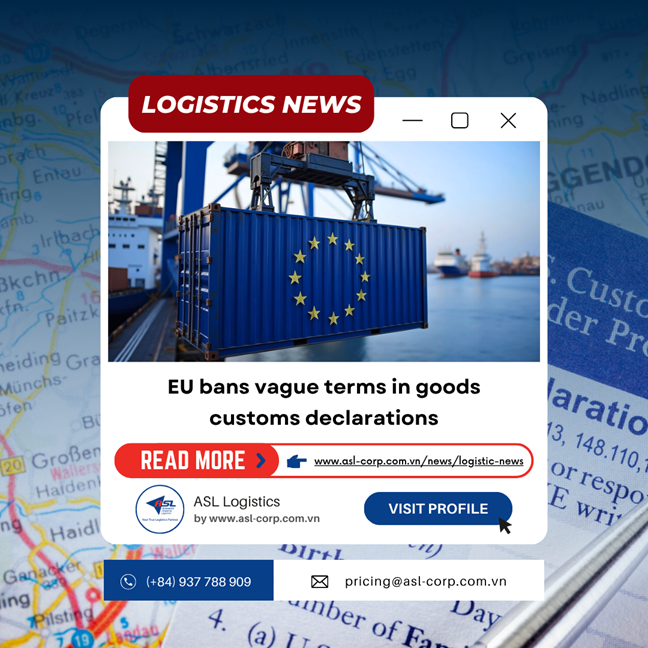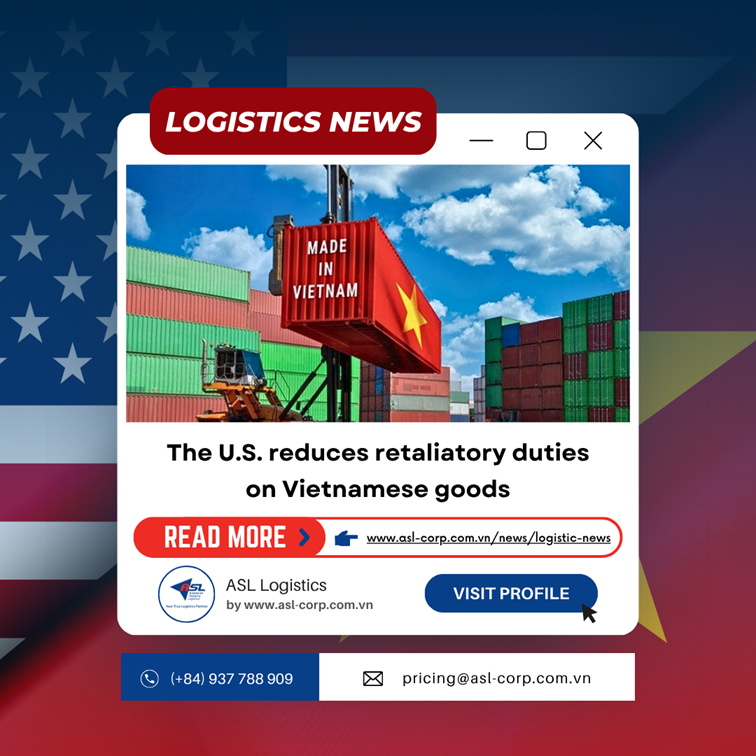Logistic News
ESCAPING U.S. RELIANCE, VIETNAM FINDS PROMISE IN CZECHIA & EASTERN EUROPE
06 May 2025
Czechia and other Eastern European countries will be key markets helping Vietnam reduce its dependence on the U.S. market and boost export growth in the coming years.

Vietnamese Footwear Finds Strong Market Presence in Czechia and Eastern Europe
According to the Vietnam Trade Office in Czechia, trade turnover between Vietnam and the Czech Republic is showing strong growth in 2025, particularly in exports from Vietnam to the Czech market.
Specifically, in the first quarter of 2025, the total trade value between the two countries reached USD 548,646,934, with exports from Vietnam accounting for USD 495,228,465 and imports at USD 53,418,469.
This is a positive sign, indicating that Vietnamese exports to Czechia are on a sharp upward trend, with a growth rate of 62.3% compared to the same period in 2024.
The Vietnam Trade Office attributes this strong export growth to trade agreements between Vietnam and the European Union, including Czechia, which have created favorable conditions for Vietnamese goods to enter these markets.
Additionally, Vietnam has made notable improvements in product quality, especially in key export sectors such as textiles, electronics, and seafood, better aligning with Czech market standards.
Furthermore, the Czech economy has seen a robust recovery after the pandemic, leading to increased demand for imported goods, particularly consumer and industrial products.
The preferential tariffs offered under the EU–Vietnam Free Trade Agreement (EVFTA) have also significantly boosted Vietnamese exports to the Czech market.
Eastern Europe – A Promising New Market
Amid rising export tariffs to the U.S., Vietnam’s Ministry of Industry and Trade identifies Czechia and Eastern Europe as promising destinations for Vietnamese exports.
As a member of the European Union and a party to the EU-Vietnam Free Trade Agreement (EVFTA), Czechia offers significantly reduced tariffs for Vietnamese goods, giving Vietnamese exporters a substantial advantage over competitors from outside the EU.
Moreover, Czechia serves as a strategic gateway to the EU, allowing Vietnamese products to access not only the Czech market but also broader European markets.
Vietnamese products such as apparel and footwear are gaining strong traction in Czechia, thanks to their quality and competitive pricing. Processed foods—especially organic items and traditional Vietnamese specialties—are also drawing increasing interest from Czech consumers.
Additionally, Czechia has a growing demand for electronics and components, which Vietnam is well-positioned to supply with its advanced tech products.
Beyond Czechia, other Eastern European countries—including Poland, Hungary, Romania, Bulgaria, and others—are experiencing rapid economic development, rising consumption, and deeper integration with the EU. These dynamics make the region an attractive and high-potential market for Vietnamese exports.
According to the Vietnam Trade Office in Czechia, Eastern European economies are showing strong growth, with increasing demand for imports from non-EU countries—Vietnam in particular. Key export categories with strong market potential include textiles, footwear, processed foods, electronics, and industrial materials.
Focusing on Product Quality and Marketing Strategy
The U.S.’s reciprocal tariff policies and Vietnam’s shift toward new export markets—particularly Czechia and Eastern Europe—are opening up new growth opportunities.
“Czechia and other Eastern European countries will be key markets that help Vietnam reduce its dependence on the U.S. and drive export growth in the coming years,” the Vietnam Trade Office in Czechia emphasized.
However, these markets also present significant challenges, as Eastern European countries have high standards for product quality.
Vietnamese businesses must also contend with strong competition from both regional and global players, especially producers within the EU and Eastern Europe.
“In response to U.S. trade policy shifts, Vietnamese enterprises should proactively redirect their export strategies toward European markets—especially Czechia and Eastern Europe—to minimize risks stemming from U.S.-Vietnam trade uncertainties,” the Trade Office advised.
To succeed, Vietnamese businesses need to carefully prepare in terms of product quality, develop robust marketing strategies, and fully leverage the preferential benefits offered by the EVFTA to ensure sustainable growth in a rapidly changing global trade landscape.
Improving product standards and aligning with international requirements will be essential to compete effectively in these demanding markets. Alongside that, enhancing marketing efforts and building strong brand identities will help Vietnamese firms stand out.
Maximizing tariff advantages under the EVFTA can also give Vietnamese products a competitive edge across the European market.
According to the Trade Office, businesses should continue promoting core export items while exploring new opportunities in high-tech and consumer goods segments.
Strengthening relationships with local partners and participating in trade fairs and international events in Czechia will be crucial for expanding market presence.
Furthermore, trade promotion agencies are encouraged to support Vietnamese companies in finding partners and expanding their customer networks in these markets, especially amid increasingly fierce global competition.
Source: VnEconomy

Head Office
ASL Hồ Chí Minh
Số 31/34A Ung Văn Khiêm, Phường Thạnh Mỹ Tây, TP. Hồ Chí Minh, Việt Nam
 Công Ty Cổ Phần Giao Nhận Vận Tải Mỹ Á
Công Ty Cổ Phần Giao Nhận Vận Tải Mỹ Á
 (+84)28 3512 9759
(+84)28 3512 9759
 (+84)28 3512 9758
(+84)28 3512 9758
 pricing@asl-corp.com.vn
pricing@asl-corp.com.vn
 mdirector@asl-corp.com.vn
mdirector@asl-corp.com.vn
 www.asl-corp.com.vn
www.asl-corp.com.vn
LOGISTICS SERVICES










.png)
.png)

.png)





